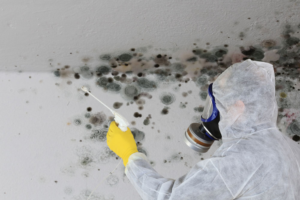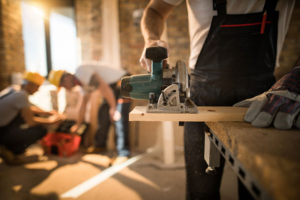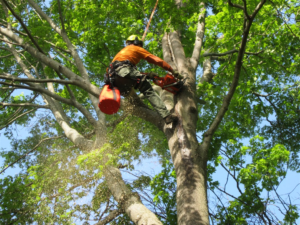Patriot Garage Door enhances your home’s curb appeal and offers energy efficiency and smart functionality. Consider factors like climate, maintenance preferences and your architectural style.

Upgraded options include external keypads with cameras, timers and a battery backup for operating the garage door during power outages. Always familiarize yourself with the location of the emergency release cord, which hangs inside the garage and enables you to operate the door manually.
It may seem like the garage door is a pretty simple piece of equipment, but it actually has an interesting history. When car ownership became popular in the early 20th century, it was clear that people would need to protect their new investment and find a place to store it. The first cars were stored in carriage houses alongside horse-drawn vehicles, but this method proved to be unsustainable as automobiles began to become more affordable. In order to prevent cars from getting damaged by snow, rain, or other impediments, homeowners started building detached garages to store their vehicles. These structures had large doors that opened outward, much like a shed. The problem was that these doors were often heavy and difficult to open, especially in the wintertime.
This was not ideal, but it was better than parking a vehicle outside the house, where it could be vulnerable to thieves and the elements. Entrepreneurs saw this as a golden opportunity and built private, fee-based garages that provided an excellent service to automobile owners. However, these garages still did not offer the convenience that many drivers desired and people quickly started to notice a few drawbacks.
The first personal garages had doors that acted like traditional barn or carriage house doors and opened outward. This meant that they were heavy and had to be pushed open, which made them difficult in the wintertime when they were frequently blocked by snow. They also needed a lot of space, which was inconvenient and expensive when it came to building a garage for one’s own use.
Design
As homeowners focus on the aesthetics of their homes, they are also incorporating garage doors into their design plans. The variety of styles and materials available to homeowners make it possible to choose a door that not only serves its functional purpose, but also complements the design of the home. For example, many people opt for a steel garage door clad with windows and trim that mimics the look of a traditional wood carriage house door.
Another popular option is an insulated garage door with glass panels. This lets natural light flow into the garage and creates a sense of openness. It can even be used as a focal point that draws the eye away from the less attractive aspects of a garage, such as an oil-tank or other unsightly items.
In addition to style, energy efficiency is another factor homeowners consider when choosing a garage door. Insulated doors help keep the garage warmer in winter and cooler in summer, which can result in a significant reduction in energy costs. Many manufacturers offer a variety of insulation levels, ranging from zero to 20, with 20 representing the highest level of insulation.
One of the most important considerations when choosing a garage door is the safety features it has to offer. For this reason, it is important to choose a door with safety sensors that prevent the door from closing on an object or person. Many manufacturers have incorporated these sensors into their door systems, making them easily installed.
Other important safety features that should be considered include a fire-rated garage door. This type of garage door has a heavy, solid-core construction that helps to stop the spread of fire from the garage into the home. These doors are commonly made of fire-rated timber, such as meranti, which has excellent insulation properties and is resistant to wear and tear.
In addition to safety, other things to consider when choosing a garage door include the amount of maintenance required and the cost of installation. While there are some tasks that can be done by the homeowner, such as regular cleaning and lubrication, professional installation and major repairs should always be carried out by a qualified and licensed technician.
Materials
The material used to make a garage door can affect its durability, longevity and cost. Depending on the climate, some materials are more suitable than others. For example, if you live in a coastal environment or an area that experiences heavy rainfalls, you should consider buying a high-quality, moisture resistant material.
The most common type of garage doors are made from steel, aluminum and wood. Steel is a durable option that can withstand the elements and impacts, as well as provide great energy efficiency through its insulated construction. It also comes in a range of styles and finishes to suit your home’s aesthetic. You can find steel garage doors in flat, raised panel or carriage house designs and some models even have cladding to give them the look of a real wood door.
Aluminum garage doors are a more modern choice that offer a sleek appearance and can be fitted with windows to add natural light. They have a low R-value, however, which means that they conduct heat quite easily and may not be as effective at insulating your garage as other options.
Lastly, wood garage doors are a classic option for those wanting a traditional aesthetic. They can be crafted from a range of different wood species and are highly customizable, so you can choose a finish and design that matches your home’s style. Although they are more expensive upfront than other options, wood garage doors last a long time and enhance your home’s resale value.
If you’re looking for a more budget-friendly option, then you should consider a steel composite garage door. This type of garage door is a compromise between the natural beauty of wood and the durability of metal. It’s made from a combination of recycled wood fibers and robust resin, so it’s less likely to warp or rot than real wood. However, it still has a beautiful wood grain and is durable enough to resist dents and scratches.
Safety
A garage door is one of the largest moving parts of a home. As such, it can pose serious dangers if it isn’t properly maintained. Thankfully, there are plenty of measures homeowners can take to ensure their garage doors are safe.
Keep Kids Out of It
While it is easy to teach children not to play near a stove, many people forget to instill the same caution around their garage doors. The sheer size and mechanics of these devices can make them a tempting target for curious kids. Make sure wall-mounted opener buttons are out of reach of young children, and educate them about the dangers of operating the garage door. Instilling this awareness from an early age can help to prevent injuries down the road.
Make It a Habit to Check and Test
Like any household item, your garage door needs regular maintenance to ensure it is functioning correctly. Some things are simple enough to do yourself, but it’s always best to leave major adjustments and repairs to a professional. If you have young children, consider adding pinch-resistant door panels to prevent finger injuries. It’s also important to make sure the auto-reverse function is working properly. This feature detects objects or people in the path of a closing door, and instantly reverses direction. You can test this by positioning an object, such as a bucket or gallon of milk, in the path of the door and pressing the opener button. The door should immediately reverse direction to avoid hitting the object.
Another safety measure is to regularly clean and align photo eye sensors. These are located on either side of the garage door opening and detect movement from any objects that come within range. It’s important to keep them clean and in alignment, as a dirty or misaligned sensor can lead to unexpected opening or closing of the garage door.
Lastly, make it a habit to close your garage door completely when you are finished using it. Leaving it partially open can invite critters and wild animals into your home, not to mention burglars. A burglar who sees your garage door open could think it’s an easy way into your home, making him or her more likely to break in and steal valuables.








